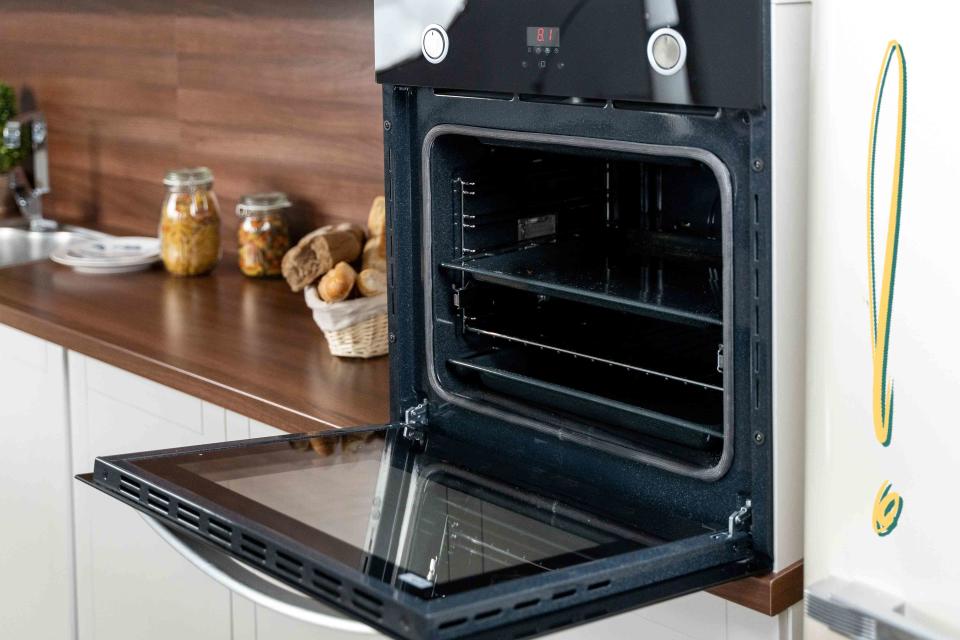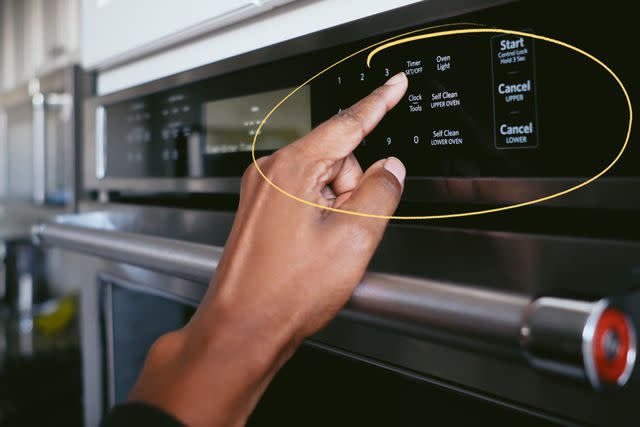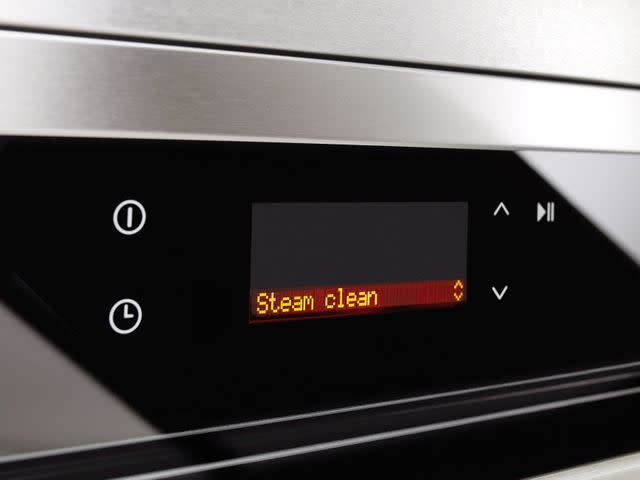Is It Safe To Use Your Oven’s Self-Cleaning Function?
The experts weigh in on the risks and how to use it safely.

Simply Recipes / Photo Illustrations by Wanda Abraham / Getty Images
I don't enjoy cleaning my oven. (Does anyone?) At my house, it’s usually apple pie filling that oozed out of the crust or the lasagna cheese that dripped down the side of the casserole. There’s always gunk that gets baked on the racks and floor of my oven, and they're really hard to remove.
I've always wondered if it’s OK to use the self-cleaning setting on my oven to burn away the mess. It seems so much easier than scrubbing by hand. But I've read anecdotes that warned me that it isn't safe—I don't want to break my oven while trying to clean it! Here's what I learned from the experts.
The 2 Ways Your Oven's Self-Cleaning Setting Work
There are two ways the self-cleaning function in an oven can work.
“The first one involves high heat that essentially incinerates all the residue and leaves the oven relatively clean,” says microbiologist Jason Tetro, host of the Super Awesome Science Show and author of The Germ Code and The Germ Files. The high-heat clean is for more serious baked-on grime removal. Temperatures can go higher than 800ºF, which will burn leftover food and turn it into ash. This can take three hours or longer.
“The other is using steam to loosen the residue so that it can be wiped off with a cloth,” explains Tetro. According to appliance manufacturer Whirlpool, the steam cleaning cycle is recommended when the oven is just lightly soiled. Temperatures don’t usually go higher than about 400ºF and the cycle takes about an hour.
With both cycles, you wipe away any residue with a wet cloth afterward to finish cleaning.

Simply Recipes / Photo Illustrations by Wanda Abraham / Getty Images
Prepare Your Oven for the Self-Cleaning Function
There are stories from people who say their oven broke after the self-clean cycle or it caused a fuse to burn out. According to Consumer Reports, this isn’t the norm. Problems with the self-clean cycle were reported in only 1% of ovens in a recent study.
“It’s safe to use the self-cleaning function on ovens, but make sure to prepare the oven and stay nearby throughout the cleaning process,” says Bree Lemmen, Whirlpool’s Kitchen Brand Manager.
Read the instructions in your oven’s owner manual before getting started and make sure to:
Remove anything inside the oven including pots and racks
Wipe away any visible messes
Open windows and turn on the exhaust fan in your kitchen
Make sure the oven vent is uncovered
Don’t leave the house during cleaning because there could be smoke or fumes. If you have pets, you should keep them in another room because they are more sensitive to odors.
The More You Know: Health Risks of Running the Self-Clean Cycle
Your oven's self-cleaning cycle does come with known health risks.
“High heat may lead to the creation of toxic chemicals in the air such as polycyclic aromatic hydrocarbons (PAHs) and heterocyclic amines (HCAs). Then there is the formation of the potentially deadly carbon monoxide,” says Tetro. ”Steam cleaning may lead to the aerosolization [i.e. creating small particles that float in the air] of some chemicals inside the oven itself.” That's why it is important that you keep the kitchen windows and doors open, and the exhaust fan on when you run the self-cleaning function.
Still, these risks are considered lower than cleaning your oven with a chemical oven cleaner.
Many oven cleaners contain chemicals such as sodium hydroxide or butoxydiglycol that can be harmful if you accidentally ingest it or your skin comes in contact with it. “They are known poisons and exposure should be minimized,” says Tetro. “The other issue with manual cleaning is the proximity to the chemicals themselves. As a result, self-cleaning and steam cleaning may be better in terms of safety as well as effectiveness.”

Getty Images
The Takeaway
Don't let the stories of blown fuses and broken ovens scare you—they are the exception, not the norm. Your oven's self-clean cycle is safe to use as long as you follow the manufacturer's instructions, including keeping your kitchen well-ventilated.
Since the cycle can take a long time, be prepared for when your oven will be out of commission. And, on the off chance that it could trigger a problem, don’t run the self-clean cycle right before you plan to cook a big meal, like right before Thanksgiving.
The best thing you can do to avoid having to deep-clean your oven often is to spot-clean it regularly. “You can manually clean your oven using a rag and common household ingredients, like baking soda, vinegar, and lemon juice,” suggests Lemmen. “Most oven racks can also be cleaned with soapy water and a sponge. If you have a porcelain enamel or glass surface, it’s important to clean up food spills as soon as possible, and to use a gentle cleanser so as to not damage the finish.”
Read the original article on Simply Recipes.

